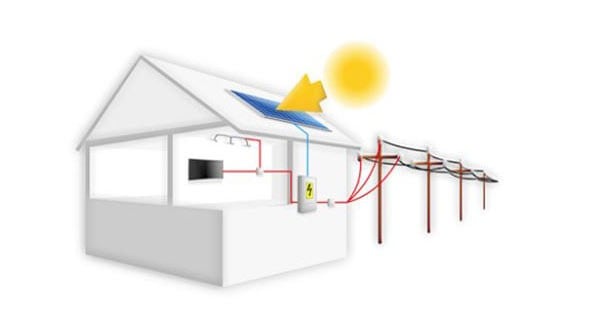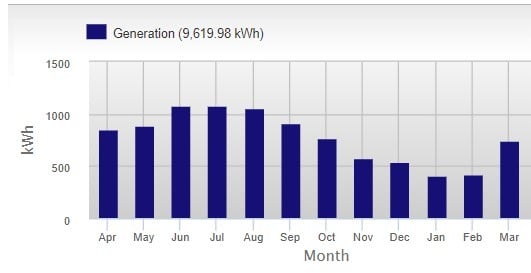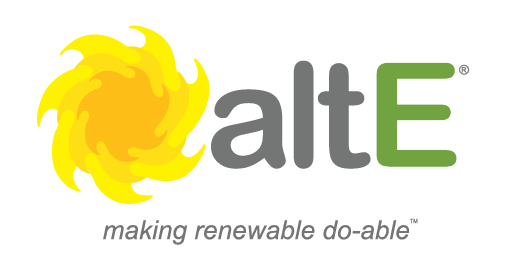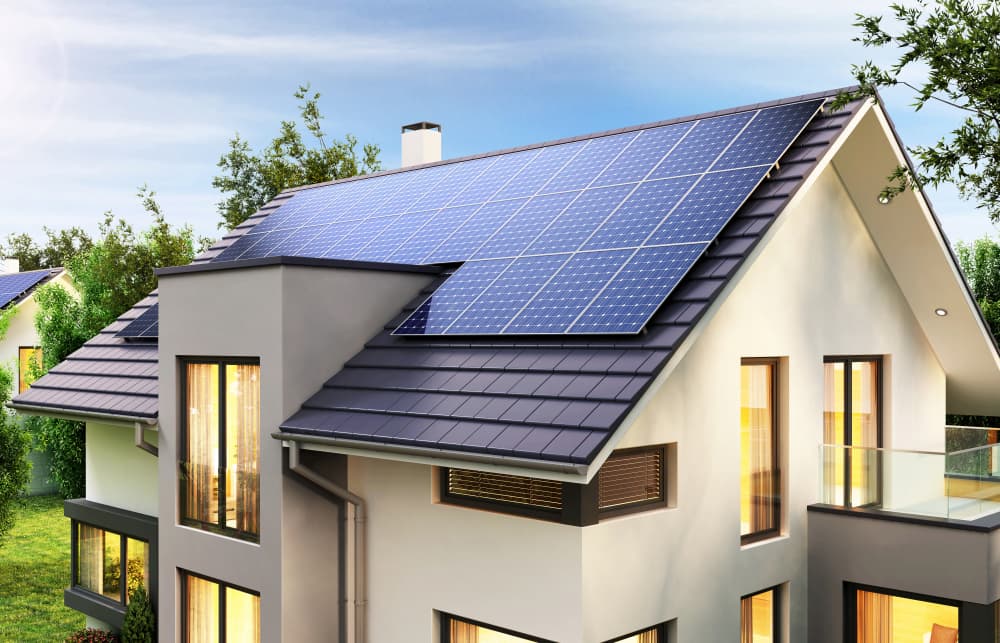When you are considering solar energy for your home or business, it might feel like solar has a language of its own – one in which you have to become fluent to understand your options. While there are certainly more than a few key terms to master (see our glossary of alternative energy terms), you can navigate your solar project easily with the right guide.
As part of our library of solar energy resources and education, we’ve put together a handy guide that breaks down one of the most popular types of solar panel systems in the U.S., covering the components of grid-tied solar systems.
In this guide, we’ll cover:
- What is a grid-tied solar system?
- What are the critical characteristics of grid-tied systems?
- What are the essential components of a grid-tied solar system?
- How do grid-tied solar systems work?
- The cost of a grid-tied solar system
- The pros and cons of grid-tied solar systems
Keep reading to learn more about how grid-tied solar systems work and whether this system type is the right choice for you.
What Is a Grid-Tied Solar System?
A grid-tied solar system is a solar energy setup that maintains a connection to the electricity grid. These systems generate electricity from the sun, but rather than storing excess energy in batteries for backup power, they export it to the larger utility grid. If the home or business requires more power than what is available from the solar panels, the power is imported from the utility grid.
There are many different names for a grid-tied solar system, including:
- On-grid solar system
- Grid-connect solar system
- Grid-connected solar system
- Grid-intertied solar system
- Grid-direct solar system
How grid-tied solar systems are similar to other systems
There are two main similarities between grid-tied and other solar power systems:
- It is a photovoltaic (PV) solar power system, which means that it produces energy using solar panels that convert sunlight into electricity (DC).
- The solar panels are installed on-site, where they will receive ample sun exposure and can be wired to transport electricity.
How grid-tied systems are different from other systems
Grid-tie systems are inherently simpler than both grid-tie systems with battery backup and stand-alone solar systems (off-grid solar systems). Some critical differences between grid-tied and other solar systems are:
- A grid-tied system uses a grid-tie inverter to communicate with the utility grid so your home can both import and export power to the grid as needed.
- This solar setup has no battery storage, which streamlines installation and reduces your system cost.

A grid-tied solar system diagram.
What Equipment Do You Need for a Grid-Tied Solar System?
Another one of the many perks of a grid-tied solar system design is that it requires minimal equipment, easy and affordable to install. Your exact needs might vary based on your specific setup, property, and preferences, as with any solar solution. But in general, you’ll find that the components of a grid-tied solar system are straightforward.
Grid-tied solar system components
- Solar panels: The solar panels collect the sun’s energy and produce DC electricity, which can then be converted into the AC electricity you need to power your home.
- Racking/mounting: The solar panel mounting system secures and stabilizes panels on your roof or the ground.
- Wiring: Wiring is required to conduct power between the solar panels and inverter, then transport it to the net meter/home.
- Grid-tie Solar Inverter: The inverter converts the DC electricity from your solar panels into AC electricity (the form required for your appliances and other electrical devices). Grid-tie solar inverters come in three types: microinverters, string inverters, and string inverters used with power optimizers. Today’s grid-tie inverters are quite sophisticated, tracking the maximum power point of the modules to operate the system at peak efficiency and terminating the grid connection if grid power is interrupted from the utility.
How Grid-Tied Systems Manage Power Surpluses and Shortfalls
What happens to excess solar power production?
When there is a power surplus in a grid-tied solar system, the extra power is exported to the utility grid. If your utility company allows “net metering” arrangements, you’ll receive utility bill credits for this power.
What happens when the sun goes down?
Because a grid-tied solar system is connected to a constant power source via the grid, your home does not run out of power at night or on cloudy days. When your solar panels are not collecting sunlight and producing energy, your system will simply import power from the utility grid to fill the gap.
Can grid-tied solar systems use net metering?
One of the most significant grid-tied solar system benefits is leveraging net metering. Because your connection to the grid is a two-way street, you can import energy – but you’ll also be able to export it.
Net metering is earning bill credits for excess solar energy exported from your solar panels to the utility grid. With net metering, many homeowners can significantly reduce their utility bills, and some even pay off their monthly charges altogether. Many electric utility companies support net metering, but some do not – so be sure to check with yours when planning and budgeting for your grid-tied solar system.
Grid Outages
Solar newbies may not know about grid outages and the potential to take down your grid-tied solar system. In short, systems can not remain on during grid outages. This is to protect utility electrical workers from any unaccounted-for surges as they work to repair the outage. This helps owners of grid-tied solar systems avoid “anti-islanding” infractions. There are ways to keep necessary appliances like refrigerators and air conditioners powered up during grid outages, including having a backup generator ready to go or by adding battery backup to your grid-tied system.
How Grid-Tied Solar Systems Work Over a Year
The amount of “give and take” your grid-tied system has with the grid depends not only on the time of day but also on the time of year.
The changes in seasons (and what this means for the weather and direction of the sun) will impact how much energy your solar panels can produce. And thus, it will shift the amount of energy you’re giving to and taking from the grid.

A graph of annual solar power generation from an actual 6.5kW grid-tied solar system in Colorado.
Spring & Fall
In terms of weather, spring and fall are usually the more moderate times. Similarly, a grid-tied system’s energy imports and exports are fairly balanced. Because your home is less likely to need significant heating or cooling, and your system provides a steady amount of energy, your energy needs and supply will probably break even.
Summer
During the long, sunny summer days, on-grid systems tend to export far more power than they import. Depending on your utility company, you may be able to save and “roll over” these energy credits to use on your bills throughout the year.
Winter
The weaker sunlight and shorter winter daylight hours mean that your solar energy system will likely be at its lowest solar output levels. At the same time, homes with electric heating demand a lot of energy. So, your grid-tied system will generally need to import more energy than it exports during winter.
How Much Does a Grid-Tied Solar System Cost?
Many factors affect how much a grid-tied solar system costs, including:
- Location
- The size of the solar energy system
- The pitch of the roof
- DIY vs. Professional Installation
Remember that you could qualify for solar tax credits that majorly reduce the overall expense.
Here are a few estimates for the average cost of a grid-tied solar system (net of the federal solar energy tax credit), based on system size:
- 4kW: $9,600
- 6kW: $13,000
- 8kW: $16,870
- 10kW: $20,350
- 12kW: $24,540
- 14kW: $26,935
- 16kW: $28,860
Grid-Tied Solar Systems: Pros & Cons
Pros of grid-tied solar systems
- Least expensive type of solar energy system
- Lowest installation costs
- High potential savings (using net metering)
- Quickest return on your investment
- More reliable than many other system types
- Simplest system design
Cons of grid-tied solar systems
- If the grid experiences an outage, you will be without power (even during daylight hours).
Key Takeaways on Grid-Tied Solar Systems
- Grid-tied solar energy systems are the most popular renewable energy option/setup in U.S. homes.
- Grid-tied systems can utilize net metering, allowing surplus power to be exported to your utility grid in exchange for credits on your bill.
- There are many benefits of grid-tied solar systems, including reliability and cost-effectiveness.
- The primary drawback of a grid-tied solar energy system is that it cannot provide power if/when the utility grid goes down.
- In many areas, grid-tied systems can produce a significant amount of surplus power (and thus, bill credits) during the summer. Homeowners can then use these credits to pay winter’s typically larger utility bills.
- Other options include off-grid or hybrid solar systems, but grid-tied tends to be the best fit for most residential applications.
Learn More about Your Solar Options from altE
Are you considering a DIY grid-tied solar system? Here in the altE Resources Library, you can find a wide variety of information on this topic and others. Check out our Solar Power System Components video series for more details about all the pieces and parts that make up a solar energy system.
If you’re ready to move forward and want help planning your system, submit a free grid-tied solar power system quote request with our free quote form. Or, if you’re ready to DIY your system, you can find all the components for complete grid-tied solar systems for sale through our website. Since 1999, we’ve provided our customers with direct access to the best equipment for DIY grid-tied solar system design and installation and a wide selection of other solar parts and kits.
As always, you can contact the altE team for help choosing your DIY solar system components, answers to your solar questions, and more!



